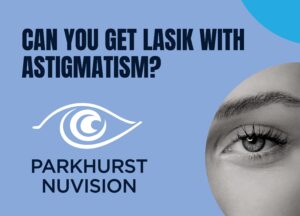Can You Get LASIK With Astigmatism?
Lasik and Astigmatism
Many people who suffer from nearsightedness, farsightedness, and/or astigmatism believe that they are not candidates for Lasik surgery or laser eye surgery. This is simply not the case! In fact, there have been great advancements in the medical field that have made it possible for people with all types of vision problems to benefit from this life-changing procedure. Here’s what you need to know about LASIK and astigmatism.
What is Astigmatism?
Astigmatism is a refractive error that occurs when the cornea (the clear, curved front surface of the eye) or the lens (the transparent structure behind the cornea that helps focus light on the retina) is curved more in one direction than in another. This causes objects to appear blurry or stretched out. Astigmatism is a very common condition that affects people of all ages and can be corrected with glasses, contact lenses, or surgery.
How Does LASIK Surgery Work?
LASIK surgery works by reshaping the cornea so that light entering the eye is properly focused on the retina (the light-sensitive tissue at the back of the eye). The surgeon first creates a very thin window in the cornea using a femtosecond laser (a highly precise laser that produces short pulses of energy). The flap is then lifted so that the underlying corneal tissue can be reshaped with an excimer laser (a UV laser that vaporizes tissue). Finally, the window is put back in place and allowed to heal.
Does LASIK cure Astigmatism?
LASIK surgery is a popular procedure for correcting astigmatism, but it is important to understand that it does not actually cure the condition. Instead, LASIK works by changing the shape of the cornea, the clear outer layer of the eye. This change redirects light so that it hits the retina — the light-sensitive tissue at the back of the eye — in the right place. As a result, astigmatism is corrected and vision is improved. However, it is possible for astigmatism to return after LASIK surgery, so it is important to have regular checkups with an ophthalmologist. For most people, though, LASIK provides a long-term solution to astigmatism.
LASIK for Astigmatism
Astigmatism can be treated with traditional LASIK surgery as well as newer methods such as limbal relaxing incisions (LRI) and intrastromal corneal ring segments (ICRS). LRIs involve making small incisions in the limbal area (the white part of the eye where the cornea meets the sclera) to release some of the tension in the curvature of the cornea. ICRS involve inserting small plastic rings into predetermined points in the stroma (the middle layer of the cornea). These procedures can be done alone or in combination with each other to achieve optimal results.
LASIK Recovery and Results
Most people experience improvements in their vision within 24 hours after LASIK surgery. It is important to refrain from rubbing your eyes or participating in any strenuous activities for at least one week after surgery to allow your eyes time to heal properly. You will likely need to use artificial tears for a few weeks as well. Your doctor will schedule follow-up appointments to monitor your healing process and make sure you are achieving your desired results.
LASIK surgery is a safe and effective way to treat nearsightedness, farsightedness, and astigmatism. If you are considering LASIK, be sure to consult with an experienced surgeon who can determine if you are a good candidate for this life-changing procedure.
Be sure to talk to one of our doctors about not only the benefits of LASIK, but also any risks of LASIK that may pertain to your individual needs and circumstances.


